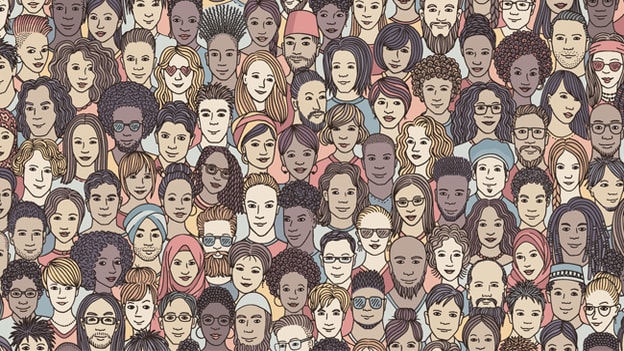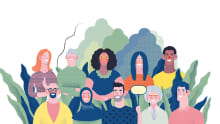The evolution of diverse and inclusive workplaces

The average employee will spend almost 90,000 hours over their life at their place of work. For some, this naturally promotes a sense of belonging towards the company, becoming a driving force for continually improving their performances. However, over the past few years, establishments have begun to realize that not all employees can cultivate a deep relationship with their workplace due to several internal or external factors. However, one thing is certain, the subject of diversity and inclusion has become a central point of every discourse on workplace culture, and companies are therefore focusing on creating a proressive atmosphere to amplify the intangible value they offer to their employees.
We can attribute the initiation of the diversity revolution to issues like gender disparity in allowing equal work and pay opportunity. Organizations are now consciously fighting discrimination based on age, disability, ethnicity, gender, gender identity and expression, religion, or sexual orientation. Many studies conducted on diversity reveal a stark difference in firms' performances with and without gender diversity. A study by McKinsey conducted over several years showed that gender-diverse companies tend to outperform non-gender-diverse firms by 15 percent. Back in 2015, when Alibaba's Jack Ma was asked for the secret behind the success of his firm, he said: "Actually, I think one of our important secrets is that we have a lot of women." Back then, Alibaba had 52 percent of women employees, and many held senior leadership positions as well.
Today, interestingly, the dynamics and scope of diversity at the workplace have evolved beyond gender disparity, and several firms are trying to address implicit biases that are sometimes hard to detect. Recently, Goldman Sachs announced its new policy that the bank will not support the IPO process of a firm lacking a woman or "diverse" director. Similarly, there have been numerous developments, and campaigns are expanding the meaning of "diversity" at the workplace.
Things are definitely looking up today. As millennials take over the workplace, the focus on diversity and inclusivity is becoming stronger. The reason is simple; millennials have spent their formative years absorbing the proressive liberal, globalized, tech, cultural, and media communication revolution. Therefore, unlike Gen X, who would borrow the values, way of living, and line of thoughts from their elders in the family, millennials borrow them from thinkers, philosophers, scholars, and expertise readily available on the internet.
According to a study by Deloitte, millennials are 32 percent more likely to respect the identities of individuals, 35 percent more likely to explore unique experiences, and 28 percent more likely to focus on acceptance and tolerance. Most interestingly, millennials are 71 percent more likely to emphasize teamwork as an overall inclusion effort. The combined result of how millennials perceive employees at work, their work, and the workplace, in general, is redefining diversity and inclusion at the workplace. As the millennials begin to drive nations, workplaces will emerge as a kaleidoscope of diverse cultures- fortified with tolerance and mutual respect.
Thus, we have come a long way in the process of making the workplace more diverse and inclusive. Today, the movement is driven by both the employees and the employers, and there are obvious benefits of embracing it. In the coming decade, one can only expect this evolution to pick up pace, and build a workplace that allows people to be their productive best.
















